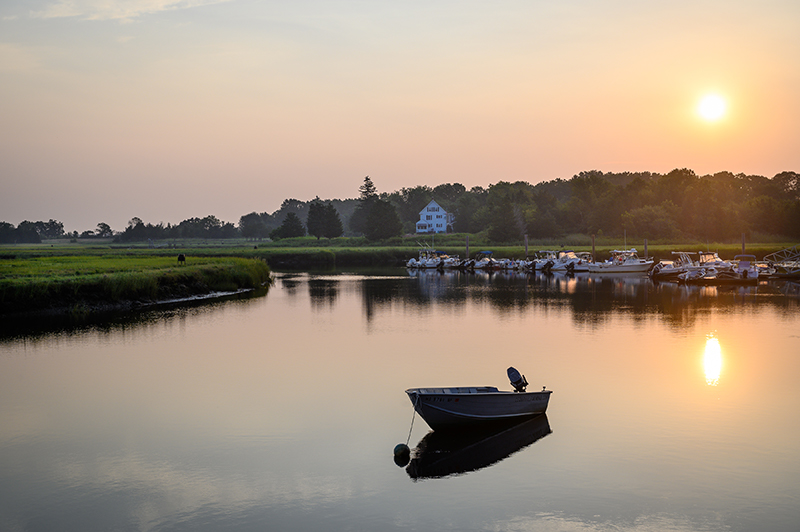The past year has been tough for so many people, families, and businesses, and many are still struggling as the pandemic ebbs and flows, and life slowly returns to normal. For lots of us, the things that sustained us most were close by: our neighbors and neighborhoods. Whether that was forming a COVID “bubble” with a few trusted friends, supporting the restaurant down the street, or just appreciating the natural beauty in our own backyards, our local neighborhoods and networks have never been more important to our happiness and well-being. Here are a few local neighborhoods we think are just great, filled with friendly people, great businesses, fabulous restaurants, beautiful memories, exciting art, and more.
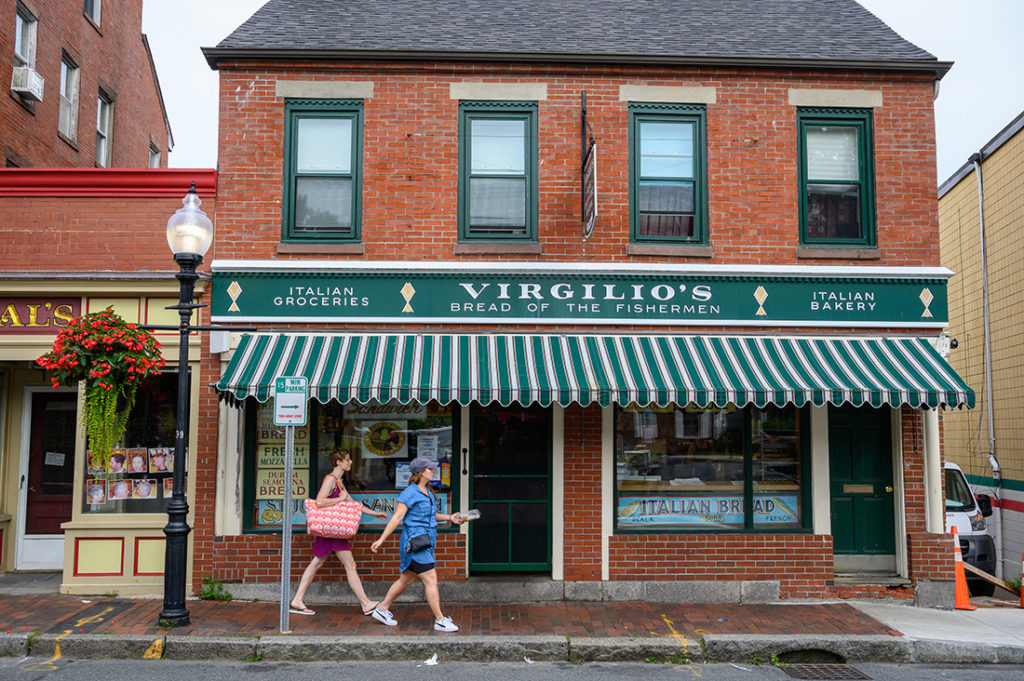
Downtown Gloucester
Danielle Glantz has worked at the legendary Chez Panisse in California, received the Académie Brillat-Savarin Medal of Merit from the Culinary Institute of America in New York, and travels to Italy regularly. But when it came to putting down roots and opening her handmade pasta and natural wine shop, Pastaio Via Corta, she had eyes only for downtown Gloucester.
“I’ve been all over the world,” Glantz says. “It’s one of the most beautiful places I’ve ever been to in my entire life.”
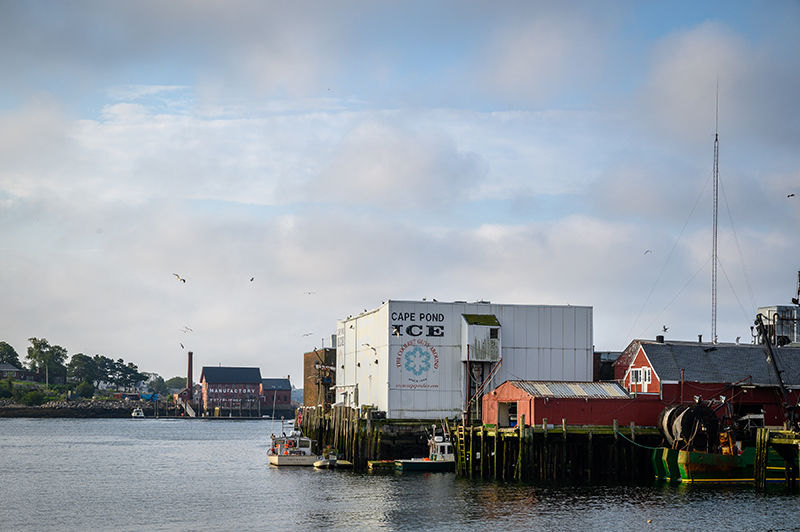
She loves the water and the sunsets, the immigrant communities, and the hardworking people.
Even though it’s a seaside town that’s popular with tourists during the summer, it’s the locals who keep downtown businesses successfully running all year. The small-business owners support each other, too, and Glantz is quick to point out all the other great downtown business around hers, like goodlinens studio, Dogtown Books, Drift Café, and Main Street Arts & Antiques.
“The sense of community here is extremely strong,” she says.
And that was especially true during the pandemic. In fact, Joey Ciaramitaro, creator of the popular blog Good Morning Gloucester and co-owner of Captain Joe & Sons, says outdoor dining is now booming attracting locals and tourists alike. They can arrive to explore downtown by land or by sea. Ciaramitaro notes that the app Dockwa lets boaters access the available docks and moorings in town, allowing out-of-town boaters to tie up, have dinner, and explore. It’s the perfect marriage between Gloucester’s heritage, the traditional fishing industry, and its downtown tourism.
“People come down here to see this kind of texture of the fishing industry,” Ciaramitaro says. “And the fishing industry serves fresh food to these people.”
Median Home Price: $595,105
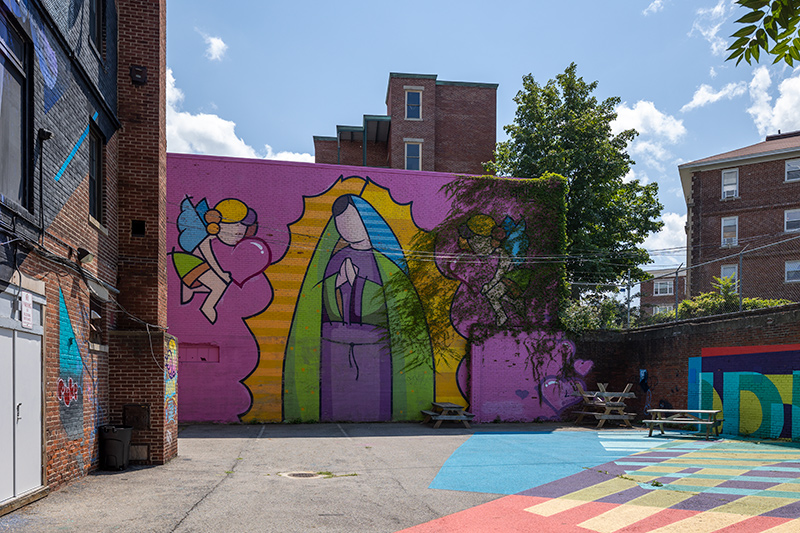
The Point
Salem
The Point neighborhood of Salem has been through ups and downs and has a reputation for being unsafe.
But for Salem City Councillor at Large Domingo Dominguez, who called The Point home for a decade, it’s a welcoming, exciting, and vibrant community filled with great food and interesting people from across Latin America.
“The sense of the family spirit that the Latinos bring the city is a tremendous asset,” he says. “The people are hardworking and really contribute a lot to the city.”
Those who venture outside the main downtown Salem area and into The Point will find a harborside neighborhood filled with restaurants like Salem Tipico and La Delicia, which serve delicious and authentic Latin food, lots of new investments from the city in amenities like sidewalks and parks, and friendly people.
One of The Point’s crowning glories is the Punto Urban Art Museum, an open-air mural project featuring more than 75 large-scale murals over a three-block radius. (Dominguez’s favorite? The Big Papi mural by artist Greg Guthro.)
Although guided tours are currently on hold due to the pandemic, anyone is free to explore the free outdoor artwork on their own, using the website puntourbanartmuseum.org as a guide.
The Point has its challenges, but also has a lot of heart and soul.
“Definitely, there are concentrations of poverty there, but it’s also a place where you’re going to hear different languages, you’re going to see bodegas, and the entrepreneurial spirit,” says Salem Mayor Kim Driscoll. “The artwork, I think, speaks to the neighborhood. Many of the artists either came from the neighborhood or have cultural backgrounds that are similar to the people who live in The Point neighborhood, and they sort of tell the story through their art.”
Median Home Price: $509,606

Downtown Newburyport
With its boutiques, restaurants, and boardwalk along the mouth of the Merrimack River, Newburyport is a beloved place for shopping, dining, and strolling. But it can be argued that the anchor of the downtown neighborhood is actually art in all its forms, whether painting, sculpture, theater, music, or film.
At its center is the Firehouse Center for the Arts, a premier arts venue that hosts concerts, theater, films, a visual arts gallery, and more throughout the year. This month, for instance, the Newburyport Documentary Film Festival is a highlight (running September 17-19).
“The Firehouse, and the arts in general, are the lifeblood in the heart of Newburyport,” says John Moynihan, executive director of the Firehouse. “The arts are a major part of the economy of Newburyport, especially in the downtown area. Between all of the arts organizations in town, we pump over $3 million worth of economic impact back into the community.”
The arts are everywhere, whether it’s the at Newburyport Art Association’s Range Light Sculpture Park, located on the water behind the art association building on Water Street along the rail trail; performance groups like the Newburyport Choral Society and the Actor’s Studio of Newburyport; street musicians filling Market Square with song; or the Screening Room, an intimate, independent movie theater on State Street. The Firehouse is also home to a gallery of Newburyport Art Association artists’ work, says Wanda Strukus, former executive director of the Newburyport Art Association.
Because of this rich arts community—not to mention the town’s natural seaside beauty—artists are naturally attracted to downtown Newburyport.
“There are so many artists, and we’re meeting new ones all the time,” Strukus says. “The light is incredible on the water. The water is gorgeous, and the sky is gorgeous. There are so many people who are inspired to paint and photograph and draw.”
In turn, the arts attract people to Newburyport, as visitors, residents, and business owners.
“What brings a quality of life to people?” Moynihan says. “The arts play an essential role, not only supporting the community but supporting the downtown businesses, and overall, the enriching lifestyle of folks who live and visit there.”
Median Home Price: $684,466
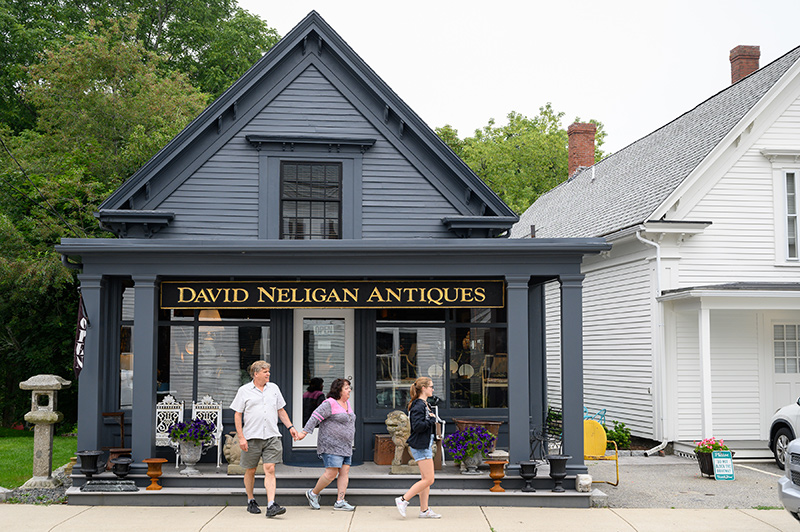
Downtown Essex
The town of Essex is synonymous with lots of things—the Essex River, Great Marsh, antiquing, and shipbuilding, to name a few. But for 31-year-resident Ken Riehl (who’s also CEO of the Greater Cape Ann Chamber of Commerce) it’s also synonymous with something else: great food.
“Your senses are overwhelmed by green, lush marshes in the summertime, with the wonderful Essex Rover flowing literally right through the downtown,” he says. “And right in the downtown is all the diversity of fine dining, which is offered both for our visitors and our locals. And most of the restaurants are open year-round.”
In fact, Essex is said to have more food establishments per capita than any other New England town, a remarkable feat for such a small place. But when you’re located in a clamming and seafood capitals, it makes sense.
All it takes is a drive through downtown to understand the dinnertime indecision that might accompany a trip to Essex. There’s the famous Woodman’s (birthplace of the fried clam), and their friendly rival further up the causeway, J.T. Farnham’s, not to mention C.K. Pearl, Great Marsh Brewing Company, Windward Grille, Shea’s Riverside Restaurant & Bar, Village Restaurant, Boat House Grille, Blue Marlin Grille, and The Farm Bar & Grille, among others.
To get a “taste” of the soul of Essex, head down to the town’s annual Clam Fest—back after the pandemic—on October 23, which will feature food vendors, arts, crafts, live entertainment, and the day’s headline event, the chowder tasting competition.
“It’s a fun, family event,” Riehl says.
Median Home Price: $715,551
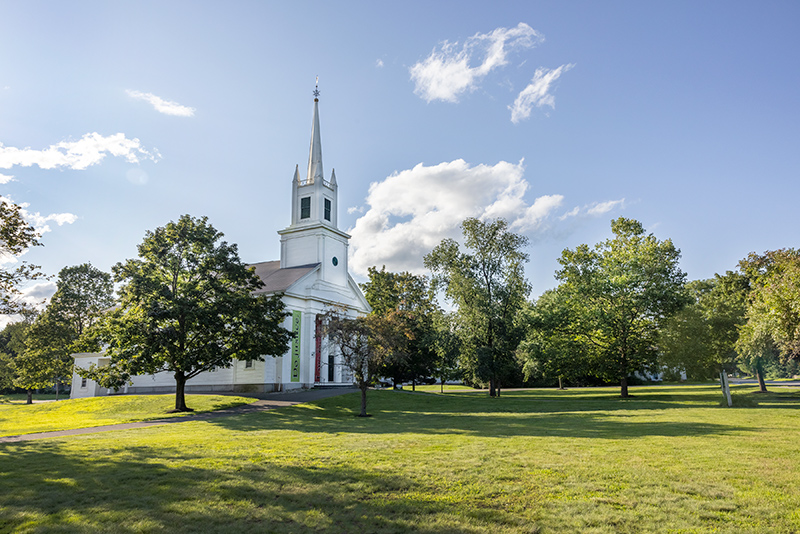
Topsfield Center
Topsfield is known far and wide for its annual Topsfield Fair, but the other 355 days of the year, Topsfield’s center is the quintessential New England town green, with its white steepled church (complete with a Paul Revere bell), grassy common, and local village shopping center.
For the people who call Topsfield home, the downtown is a place where a sense of unity, community, and family is often on display, from its festivals to its volunteer-packed teams and committees.
“It’s a very caring community,” says Lynne Bermudez, a Topsfield resident and chair of the select board. “Everybody knows each other. If you need anything, people often spring to action.”
One heart-warming example is the town’s very active Council on Aging, which not only supports Topsfield’s seniors, but has an intergenerational group.
“They are working with schools that are located right in the downtown to build relationships between our seniors and the young people,” says Bermudez.
The library—with its historic building, art collection, and exceptional children’s room—is another downtown anchor that’s beloved by residents, and the feeling is mutual, according to library director Laura Zalewski.
“Topsfield is just one of those gems of a place. When you walk downtown, there are actually stores that you can go into and good restaurants to eat at,” she says, like The Topsfield Bakeshop and the boutique/salon Luxe.
“It’s just a really good-feeling town,” Bermudez says. “People don’t tend to leave once they come.”
Median Home Price: $775,897
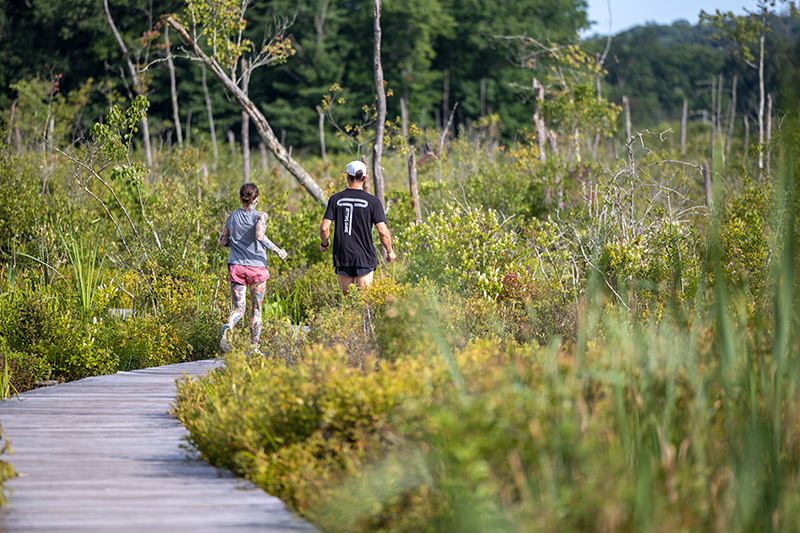
Choate Farm
Danvers
When Karen Wagner and her husband moved to the North Shore from South Carolina, they wanted a place that reminded them of their former Southern home, with beautifully cared for properties, natural beauty, and a sense of community.
That’s what they found in the Choate Farm neighborhood of Danvers, a bucolic area where they’ve now lived for nine years.
“We moved to this neighborhood primarily because it offered all the amenities we were looking for in a neighborhood and a home,” she says. Not only is it beautiful, running alongside the Danvers Rail Trail, but is also full of fun, with social events like block parties, golf outings, and even a neighborhood food-and-drink crawl, where neighbors hop from house to house, each serving a different dish to the revelers.
Wagner and her husband also appreciate their neighborhood’s natural beauty, which they often explore on the nearby Rail Trail and its SwampWalk, a wooden boardwalk across part of the Wenham Great Swamp and Ipswich River Basin.
“It’s just great to be able to walk there and look at the wildlife, find the beavers and the turtles and the snakes, see the birds and ducks flying around,” she says.
Paul McNulty, a 40-year Danvers resident and chair of the Rail Trail Committee, notes that the section of the Rail Trail near Choate Farm is one of the more “secluded.”
“It’s got a lot of older trees growing around and there are a few other spots where there are ponds,” he says. “It’s a very pretty section. It’s quiet. You’ll see deer. I’ve seen coyote, and foxes.”
And yet, the busy downtown isn’t far away.
“It’s amazing how it feels like you’re in the country but you’re not,” Wagner says. “You’re right in Danvers.”
Median Home Price: $608,092
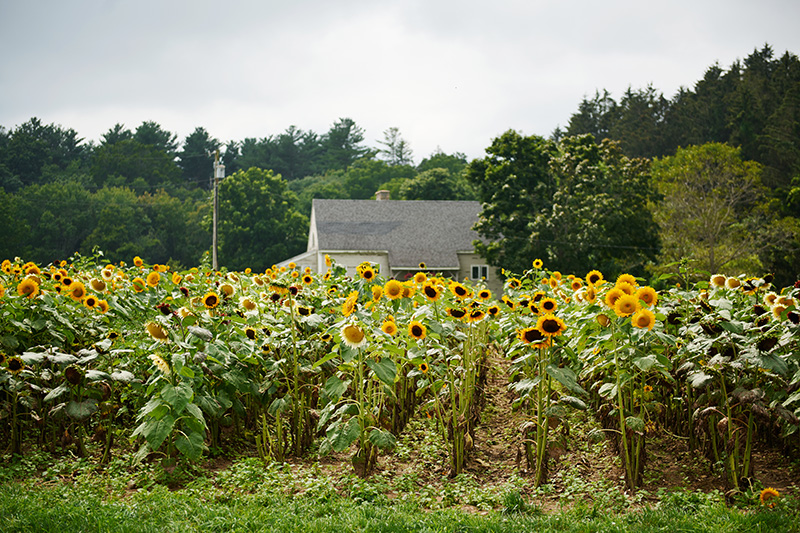
Wenham Main Street
Wenham’s Main Street is a sweet little postcard of a downtown, with historic buildings, shady trees, and two beloved community institutions: Wenham Museum and Wenham Tea House. Although the pandemic challenged both, residents and visitors still cherish the museum and tea house, and the future is breathing new life into each.
After more than 100 years, Wenham Tea House, which opened in 1912, was forced to temporarily shut its doors because of the pandemic. But this fall, it’ll reopen with two experienced North Shore restaurateurs at the helm: Brenden Crocker and Milissa Oraibi, a husband-and-wife team who most owned Black Arrow in Manchester-by-the-Sea.
At press time, they were planning to re-open the tearoom around Labor Day, and when they do, guests can expect a place that will feel just as happy and nostalgic as ever, with the restaurant serving lunch five days a week, afternoon tea on Thursday, Friday, and Saturday, and brunch on Sunday. The little retail shop will also be back—look for locally made and sourced items—with dinner service likely coming soon, too.
Crocker says he hears stories and memories of people who used to go to the tea house with their families, and even today, it’s a place where extended families gather to be together and continue family traditions.
“It’s a neat little place,” he says. “It’s got a built-in following. There are people that just want to go there and be there.”
The Wenham Museum—which will celebrate its centennial next year—is also a place filled with family traditions, thanks in part to its legendary Bennett E. Merry Train Gallery.
“Many people know us as the train museum,” says Kristin Noon, executive director of the museum and lifelong Wenham resident. “Our model railroad collections are beloved by people from 1 to 92 across the North Shore.”
Although history and tradition are an important part of the museum, it’s also embracing the future all the time, renovating its first-floor galleries in 2019 and hosting a rotating series of special exhibits including, “Color and Shadows and Light, Oh My,” a hands-on exhibit for children, and an exhibition about fox hunting, which is a local tradition in Wenham, Hamilton, and surrounding communities.
For these reasons and so many more, Wenham is worth a visit.
“A lot of times when people come to Wenham they’re just driving through,” Noon says. “I would really encourage them to stop and to get out of the car. It’s really a great, charming little place.”
Median Home Price: $788,920

Salisbury Oceanfront
When people think about the Salisbury beachfront neighborhood, their imaginations might go back to their own childhoods: Playing at the arcade at Joe’s Playland, arguing over which “beach pizza” is best, Christy’s or Tripoli, and hitting the go-carts with sand-covered feet after a day on the beach. Or perhaps they might remember even further back when musicians like Ella Fitzgerald and Sammy Davis Jr. played at The Frolics nightclub.
“Salisbury Beach was the place to be in the summer,” says Melissa Ryan, membership and marketing specialist for the Salisbury Chamber of Commerce. “It was glamorous.”
These days, Salisbury’s oceanfront not only boasts all those great nostalgic places, but it is also bringing back a touch of that old-fashioned glamour and sense of seaside fun, with live music at the Blue Ocean Music Hall (this fall look for shows like the 12th Annual New England Winter Blues Festival, Peter Wolf, and The Dave Matthews Tribute Band), elegant dining at Seaglass, beach concerts and outdoor dancing at the OceanFront Stage, and Italian cuisine at the newly renovated Capri.
Restaurants and performance venues aren’t the only local businesses embracing their natural surroundings. There’s also Groundswell Surf Café, which serves healthy, delicious food and hosts beach yoga, music, and other events, like a beach cleanup.
A new boardwalk allows for strolling with beach food favorites like fried dough, ice cream, and cotton candy, and a new welcome center and fully accessible comfort station is currently under construction. Plus, the Salisbury Beach Partnership has opened a beautifully restored vintage beach carousel reminiscent of one that used to attract revelers during Salisbury Beach’s heyday.
It’s just one of many ways that Salisbury Beach is keeping its nostalgia alive while embracing the future.
“Salisbury Beach today has everything that you loved about historic Salisbury Beach, and more,” Ryan says.

